Medical news December 12: Warning of risk of severe measles in adults
Measles is commonly known as a disease of children, but recently, the number of severe measles cases in adults has also been increasing.
Many adults with fever and rash subjectively do not think they have measles. Only when the disease becomes severe and they have to be hospitalized do they realize they have measles with dangerous complications such as enteritis, pneumonia, or infection, even life-threatening.
Hospitalization for measles complications in adults
The Tropical Disease Center, Bach Mai Hospital, continuously receives cases of adults with severe measles. Notably, many people are misdiagnosed with rash fever, skin allergies, or other diseases, leading to delayed treatment and causing dangerous complications such as pneumonia.
 |
| Measles is commonly known as a disease of children, but recently, the number of severe measles cases in adults has also been increasing. |
Ms. THB (37 years old, Nam Dinh ) is a typical example. She had a fever for 3 days with a red rash on her face and neck, then spreading to her whole body, along with symptoms of sore throat, stomachache, diarrhea and difficulty breathing.
However, she did not know she had measles. She was diagnosed with rash fever and pneumonia at Nam Dinh General Hospital but her condition did not improve. She was then transferred to Bach Mai Hospital, where she was diagnosed with measles with pneumonia complications. After 3 days of treatment, she overcame the critical stage.
Another case is a male student at VTT (21 years old, Hanoi ), who contracted measles but was misdiagnosed as an allergy. After testing, he was confirmed to be infected with the measles virus and was transferred to the Tropical Disease Center.
Mr. NVA (38 years old, Thanh Hoa) is also a measles patient but subjectively did not think he had measles when he had a fever for 5 consecutive days with sore throat, upper respiratory tract infection and rash. He only realized he had measles after going to the doctor and tested positive for measles virus.
According to Associate Professor, Dr. Do Duy Cuong, Director of the Center for Tropical Diseases, measles can cause many dangerous complications such as encephalitis, pneumonia, conjunctivitis, keratitis, otitis media, enteritis, and other infections. In particular, for adults and pregnant women, measles can seriously affect health and endanger the fetus, especially in the first 3 months of pregnancy.
Measles is currently spreading rapidly in many localities across the country, especially in the southern provinces. According to the Ministry of Health, since the beginning of 2024, Vietnam has recorded more than 20,000 suspected cases of measles, of which nearly 5,000 were positive and 5 deaths. This number is many times higher than the same period in 2023.
Localities with high measles incidence include Ho Chi Minh City, Dong Nai, Nghe An, Dak Lak, Binh Duong, Hanoi, Khanh Hoa, Thanh Hoa, Kien Giang, Can Tho and Dong Thap. At the National Children's Hospital, from September 1 to November 19, 2024, there were 195 cases positive for measles, of which children under 9 months old accounted for 31%, and children over 9 months old who had not been vaccinated accounted for 40%.
To prevent measles, the Ministry of Health recommends vaccination as the most effective measure. Measles vaccine, especially MMR (measles-mumps-rubella) vaccine for adults, will help prevent the disease and prevent complications. In addition, people need to maintain personal and environmental hygiene, improve resistance and wear masks when in contact with sick people.
In particular, the Ministry of Health has launched a measles-rubella vaccination campaign in 31 provinces and cities, with nearly 912,000 subjects vaccinated. Up to now, the campaign has injected more than 742,653 doses of vaccine, reaching 81.4% of the plan. Ho Chi Minh City has also vaccinated enough for 230,292 people.
According to Mr. Nguyen Luong Tam, Deputy Director of the Department of Preventive Medicine, the measles epidemic situation is complicated. The Ministry of Health continues to direct localities to provide additional vaccinations, strengthen monitoring and inspection to ensure vaccination safety and prevention effectiveness.
Health facilities also need to improve their monitoring and treatment capacity, minimizing severe cases and deaths due to measles. At the same time, communication work needs to be stepped up, especially for parents, to raise awareness of the importance of vaccination.
Measles epidemic is at risk of outbreak, so every citizen needs to proactively get vaccinated and take preventive measures to protect public health.
When is thyroid surgery needed?
Discovering a mediastinal tumor on an X-ray, 71-year-old Ms. Hoan was surprised with the diagnosis of a large goiter compressing the trachea, causing prolonged difficulty breathing.
5 years ago, Ms. Hoan (living in Binh Dinh) discovered that she had a benign goiter that did not require surgery. For the past month, she has occasionally felt tired, had difficulty breathing when lying down, and felt dizzy, which increased when she exerted herself, along with a feeling of obstruction in her neck.
She went to the local hospital for an X-ray and the doctor found a large mass in her chest (mediastinum) so he advised her to go to the hospital for a more thorough examination.
Chest X-ray film showed the tumor occupying the upper mediastinum, compressing and shifting the trachea to the left. Clinical examination showed the mass moving with swallowing when palpated, but not visible in the normal neck position. The doctor ordered neck ultrasound and chest CT scan to evaluate the lesion in detail.
The results showed that the thyroid glands on both sides were enlarged, measuring 45x46x109 mm (right lobe), 32x38x88 mm (left lobe) respectively, with a thickness of 20 mm. The two goiters did not protrude from the neck but protruded inward, hanging down to the chest, compressing the trachea from both sides, the trachea lumen was only 5.5 mm (normal diameter of the trachea is 12.5 - 13.5 mm). To be more certain about the nature of the tumor, the doctor performed a fine needle biopsy - FNA (Fine Needle Aspiration), confirming that the goiter was benign.
The mediastinum (within the chest) is the area bounded by the sternum in front, the spine in back, and the lungs on either side. It contains the heart, aorta, lymph nodes, thymus, esophagus, trachea, and nerves.
“When the goiter is too large, there is a risk of it falling into the mediastinum and compressing nearby structures, as in Ms. Hoan’s case. It is easy to mistake it for a mediastinal tumor if the thyroid area is not carefully examined. The prognosis and treatment methods of these two tumor groups are different; thyroid tumors have a much better prognosis than mediastinal tumors,” said Dr. Hai.
Dr. Tran Quoc Hoai, Department of Thoracic and Vascular Surgery, Tam Anh General Hospital, Ho Chi Minh City, stated that the patient's trachea was narrowed by more than half, with the risk of developing stenosis, causing severe difficulty breathing and affecting the patient's vital functions. Therefore, it is necessary to perform surgery to remove the entire thyroid goiter early to prevent adverse complications later.
According to Dr. Hoai, thyroidectomy is the best option for patients with goiter. Although this technique is not complicated, it will become difficult in cases where the thyroid gland is too large, hanging down into the mediastinum and compressing the trachea.
The approach and treatment of the tissues surrounding the tumor must be done with extreme care to avoid damage to the trachea, recurrent laryngeal nerve, parathyroid glands and large blood vessels. These structures are located near the thyroid gland, and if damaged, can lead to serious complications such as hoarseness, hypocalcemia, hematoma, etc.
The approach to the goiter was also carefully discussed by the team. The traditional thyroid incision is a transverse neck incision that will help remove most small to medium goiters.
However, with large goiters hanging in the mediastinum, this surgical approach will reveal many limitations due to the difficulty in controlling the structures in the chest, especially the large blood vessels. Therefore, the team opens the neck incision but still reserves the option of sawing the sternum and opening the chest if the goiter cannot be removed from the neck.
Thanks to the support of advanced machines such as CT Scanner, modern and clear ultrasound... before surgery, the doctor accurately determined the anatomical structure and neighboring organs. After more than 2 hours, the team safely removed the entire goiter from the neck without any difficulty.
Ms. Hoan recovered well and was discharged after 3 days in stable condition. The doctor instructed the patient to keep the surgical wound dry and clean to avoid infection; to go to the hospital immediately if there are signs of swelling, redness or pus; and to avoid strenuous activities to help the surgical wound heal quickly and reduce the risk of complications. She also needs to follow a regular follow-up schedule to check thyroid function and monitor the recovery process after surgery.
Dr. Hai informed that goiter can develop silently for many years without causing obvious symptoms. When the goiter grows large, the patient may experience fatigue, shortness of breath, dizziness, neck stiffness, neck swelling, etc.
If the goiter compresses the trachea, it will cause difficulty breathing; compresses the esophagus, causing difficulty swallowing; compresses the recurrent laryngeal nerve, causing loss of voice, hoarseness, affecting the ability to pronounce; compresses blood vessels, leading to edema, easily lowering blood pressure, making the patient dizzy, lightheaded, and in severe cases, can cause respiratory failure. Patients are also susceptible to respiratory infections if the goiter changes the structure of the airway and hinders the cleaning of secretions.
Dr. Hoai said that in addition to open surgery, endoscopic thyroidectomy or Radiofrequency Ablation (RFA) is also the preferred choice in treating small, benign goiter. This is a minimally invasive method that partially or completely removes the goiter, leaves little scarring, and preserves thyroid function. Patients also recover faster than with traditional surgery.
To prevent thyroid disease, regular screening is recommended, especially for those with high risk factors. Proper nutrition is essential, ensuring adequate iodine intake in the diet, as iodine deficiency is the main cause of thyroid problems. In addition, patients should pay attention to symptoms such as fatigue, shortness of breath, and changes in voice to seek timely medical attention and treatment.
Be alert for early signs of stroke
After 5 days of stroke onset, symptoms gradually worsened, Mr. Cuong, 75 years old in Ho Chi Minh City, was taken to the emergency room, doctors assessed it as a very rare case.
“When admitted to the hospital, the patient’s major artery in the brain was still severely narrowed. In the past 5 days, the patient’s life has not been affected, but that does not mean the danger is over. The symptoms are getting worse, the risk of sudden deterioration or stroke recurrence is very high.
The 3 Tesla MRI scan of Mr. Cuong's brain showed that he had severe stenosis and occlusion of the basilar artery and acute cerebral infarction in the left pontine region. This is an important artery that supplies blood to the brain. "Normally, patients with severe stenosis and occlusion of the basilar artery are prone to severe strokes and have a high mortality rate," said Dr. In.
The family said that 5 days before, while out, Mr. Cuong suddenly felt dizzy, could not stand, and had slight numbness on the right side of his body. The family took him to a small clinic nearby and gave him medicine to take. The medicine did not help, and recently he had additional symptoms of facial distortion on the right side and difficulty speaking.
According to the doctor, Mr. Cuong was admitted to the hospital with dizziness, muscle strength in the right half of his body reduced by 50%, slurred speech, and choking when drinking water. The patient's stroke status was assessed using the NIHSS scale, recording 6 points. NIHSS is a scale used to assess clinical prognosis for acute stroke patients, the higher the score, the more severe the stroke.
The patient has passed the “golden hour” for thrombolytic therapy or endovascular intervention to remove the clot. However, urgent treatment and active monitoring are needed to prevent the disease from worsening and the risk of life-threatening stroke recurrence.
MSc. Dr. Le Thi Yen Phung, Department of Neurology, said that the patient was treated with antiplatelet drugs and closely monitored for vital signs and risk factors for stroke recurrence. Blood test results showed that the patient's blood lipid levels were very high, and she also had atherosclerosis.
This is the main cause of severe stenosis and blockage of the basilar artery, causing ischemic stroke. “This artery is likely chronically blocked. At the same time, the neighboring cerebral blood vessels support and compensate for the lack of blood to the brain, so the patient's clinical condition does not deteriorate suddenly,” said Dr. Phung.
After 3 days of intensive treatment according to a multi-modal regimen and strict control of blood lipid levels, Mr. Cuong's health improved. Muscle strength on the right side of his body reached 4/5, slurred speech was reduced, he could no longer choke when drinking water, and his face was no longer distorted. The NISHH score was re-evaluated to 4 points, a decrease of 2 points compared to when he was admitted to the hospital.
Four days later, Mr. Cuong was discharged from the hospital. He needs to continue taking antiplatelet drugs as prescribed by his doctor for a long time to prevent a stroke recurrence. At the same time, he needs to practice post-stroke rehabilitation to improve the weakness on the right side of his body.
According to Dr. Phung, stroke is an urgent neurological emergency. When there are signs of suspected stroke such as crooked mouth, weakness in limbs or half of the body, slurred speech, headache, blurred vision... the patient needs to be taken to a medical facility with stroke emergency expertise or call the 115 Stroke Emergency Hotline for timely support and treatment, to avoid leaving it too long and causing danger.
People at high risk of stroke such as the elderly, patients who have had a stroke, or people with underlying diseases such as arrhythmia, high blood fat, atherosclerosis, high blood pressure, diabetes, obesity, etc. should have regular check-ups and take medication as prescribed by the doctor to control the disease. Regular health check-ups and stroke screening are recommended to promptly detect and treat risk factors that lead to stroke.



![[Photo] Prime Minister Pham Minh Chinh and United Nations Secretary-General Antonio Guterres attend the Press Conference of the Hanoi Convention Signing Ceremony](https://vphoto.vietnam.vn/thumb/1200x675/vietnam/resource/IMAGE/2025/10/25/1761391413866_conguoctt-jpg.webp)
![[Photo] National Assembly Chairman Tran Thanh Man receives United Nations Secretary-General Antonio Guterres](https://vphoto.vietnam.vn/thumb/1200x675/vietnam/resource/IMAGE/2025/10/25/1761390815792_ctqh-jpg.webp)
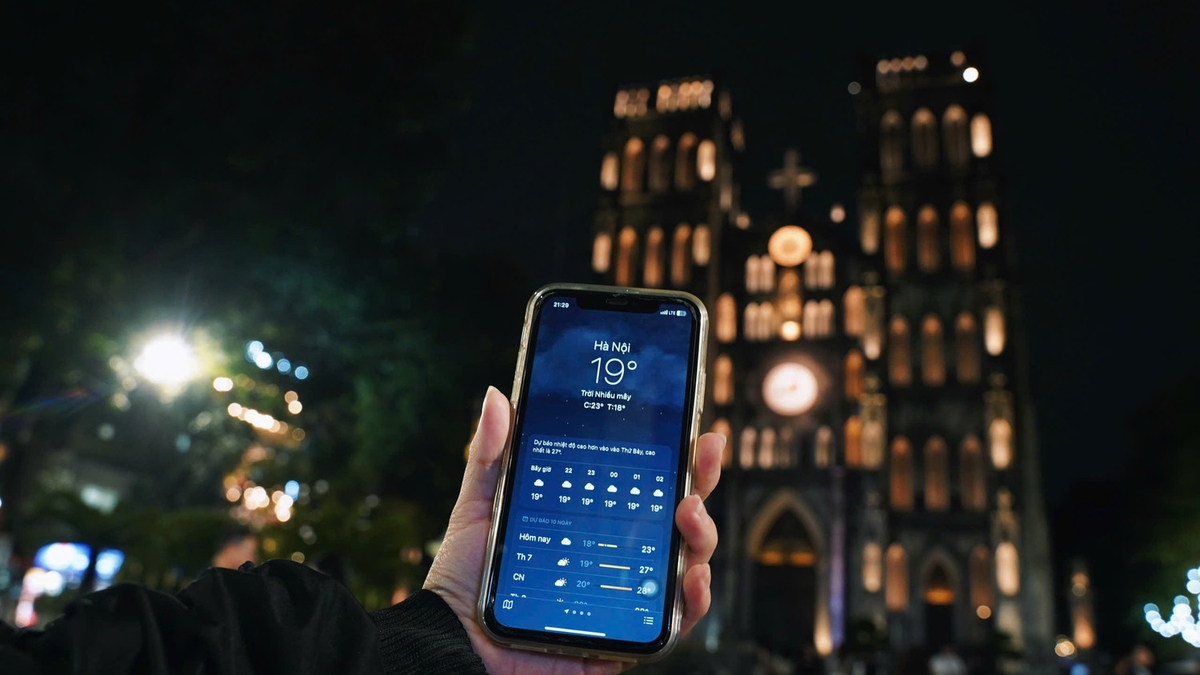

![[Photo] Prime Minister Pham Minh Chinh receives United Nations Secretary-General Antonio Guterres](https://vphoto.vietnam.vn/thumb/1200x675/vietnam/resource/IMAGE/2025/10/25/1761390212729_dsc-1484-jpg.webp)
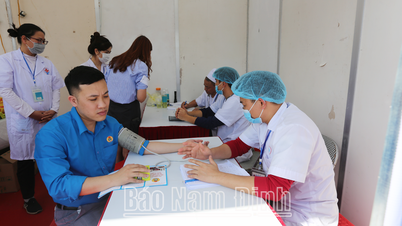

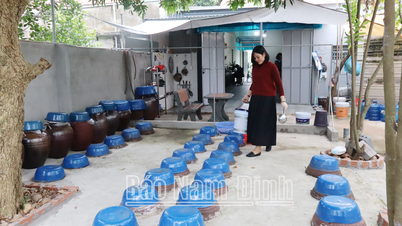

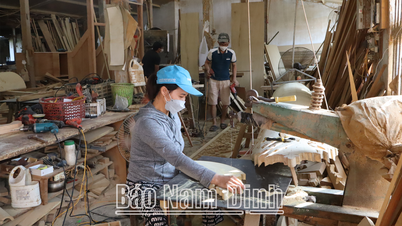








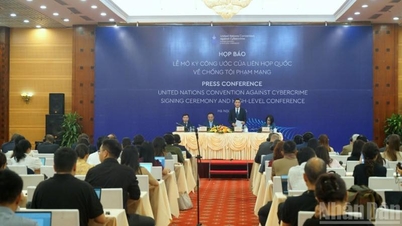




![[Photo] General Secretary To Lam meets with General Secretary and President of Laos Thongloun Sisoulith](https://vphoto.vietnam.vn/thumb/1200x675/vietnam/resource/IMAGE/2025/10/25/1761380913135_a1-bnd-4751-1374-7632-jpg.webp)










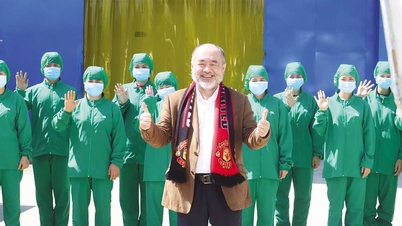







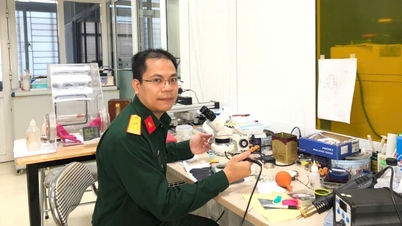
































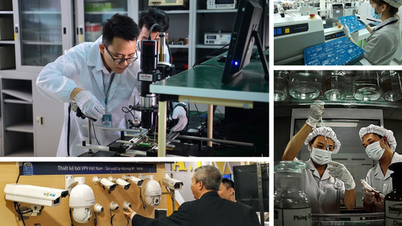





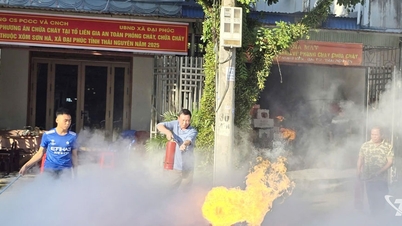


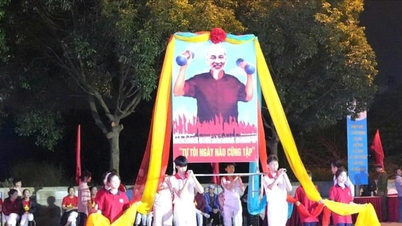


















Comment (0)